introduction
8
five : food for thought
104
one : farming for the future
10
A Thinking Man’s Abode : ragan sutterfield, AR
106
Respect for New Sprouts : louisville lambs, MS
110
Before Organic : shaheed harris, SC
12
Ancient Craft, Great Cheese :
A Piece of Rural Perfection : joaquina jacobo, CA
16
melanie & mark dietrich cochran, PA
113
An Independent Path : jason & laura penner, MN
18
Bucking the Trend : joel steege, IA
116
Survival Take Roots : chris, mike, & pat connolly, NH
21
Native Wines, New Connections : tim nissen, NE
119
The Noisy Little Farmer : dean & tracy hayhurst, CT
24
With Love and Prayer : jesse & betsy meerman, MI
122
Hay Bales & Five Generations : travis schnaithman, OK
28
Sowing a Food Community : soil stewards, ID
126
Herbs and Heritage : noemi alvarez, TX
31
Vast Promise in Montana : roy & kaylee benjamin, MT
34
six : culture & community
128
Farm Fun & Education Fight Sprawl : candace lohr, MD
38
En Pointe in Kentucky : lora jane benedict, KY
130
two : flourishing entrepreneurs
40
Blackpot Festival & Cookoff : glenn fields, LA
134
Steel Mills to Circus Arts : cirque d’art theatre, OH
136
Wheels of Change in a Rural Town : cain bond, IN
42
Creating for 100 Years : nathaniel & kerry brooks, IL
139
A Tasty Enterprise : lickety split chocolates, UT
44
The New Old Timer : todd meade, TN
142
From Mines to Wines : david lawson, VA
47
Tribal Grounds & LIFT Culture House :
New Ideas, Old-Time Values : bauman family, KS
50
leon grodski & natalie smith, NC
145
From Greenhouse to Grocery :
Newbern Gets New Firehouse : matt finley, AL
148
kimberly griffin & walker claridge, MO
54
Simple Materials, Grand Designs : ben graham, VT
57
seven : learning & action
150
A Farm Fresh Innovator : louella hill, RI
61
New Environmental Leaders in the North :
three : embracing heritage
64
joe okitkun, AK
152
New New Jersey : mikey azzara, NJ
154
Reviving Tradition : dakwa woodruff: WA
66
Standing Up for Change :
Passionately Preserving Place : hanna thurman, WV
70
colonias development council, NM
157
From Sun Dance to Community Plans : nick tilsen, SD
73
Farm Grows Native Leader : manny miles, HI
160
A Sustainable Catch : john jordan, ME
76
Shaping Tomorrow’s Leaders : joy mcgrath, DE
162
Ranching Poetic : kathi wines, NV
79
Babes in the Backcountry : leslie ross, CO
164
From Fields to Freedom : gerardo reyes, FL
167
four : toward a healthy planet
82
The Barking Moon Researcher :
melissa matthewson, OR
170
Hometown Horticulture : raina webber, MA
84
Wind Powers Friendship : kevin schulte, NY
87
Writers and Photographers
172
Organic Farming 101 : britt jacobson, ND
90
Index
174
Ancient Forests Reborn : jason & melissa fishbach, WI 93
Renewing a River : fred phillips, AZ
96
Culture and Conservation : amadu diop, GA
98
Protecting Public Lands : lisa dardy mcgee, WY
101

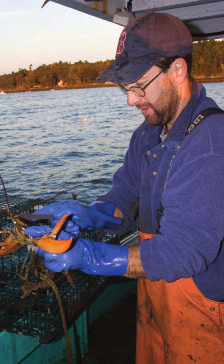
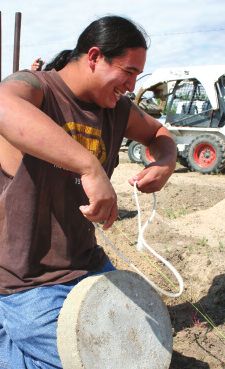
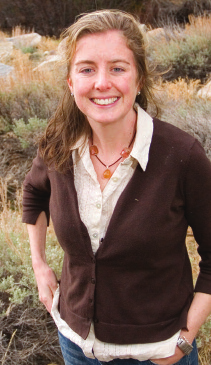

culture. Others are creating uniquely, twenty-first century opportunities like renewable energy businesses or Internet-based companies. Some are fighting for environmental or introduction
social justice. Many have found a foothold in building a stronger, healthier food system.
We use the word “countryside” broadly. While many of these stories come from very small towns or vast tracks of land in the West, others are set in urban areas. A piece Our countryside defines America as universally as baseball, hot dogs, and apple of the countryside can prevail amidst impinging urban development; it can exist in an pie and as deeply as the Statue of Liberty and the Lincoln Memorial. Whether we live in urban school garden or at a farmers’ market.
the middle of Manhattan or the suburbs of Peoria, we depend on a healthy countryside: It supplies the food we eat. It is vital to providing clean water and clean air. It is a haven for The young people showcased here are representative of many more we didn’t wildlife and wildflowers—a reservoir of biodiversity. It supplies the products with which have room to include.The stories we have included are told by another inspiring group—
we build our homes and the fibers from which our clothing is made. We flock to the young writers and photographers who beautifully captured them for these pages.
countryside for recreation and rest—whether it’s the slopes of the Rockies, a quiet getaway in the Northwoods, or a visit to relatives in the middle of the Heartland. Our rural We hope this book inspires you—whether you’re a teenager looking toward areas are rich with culture, history, and hometown values that resonate with many of us.
your future or a mom deciding what to buy for dinner. Whether you’re the president of the United States or the mayor of a small town. Despite the uncertain times in which we Yet the value of the countryside has not shielded it from hard times. Rural areas live, these stories assure us that we can have great hope. These young people are not and small towns have suffered from the decline in natural resource-based industries like just renewing the countryside, they are changing the world.
forestry, fishing, and agriculture. The patchwork of small farms that once dominated our countryside has been replaced by large tracks of single crop farmland or paved over to
— Jan Joannides, Executive Director
make way for housing developments and shopping complexes. Communities that relied Renewing the Countryside
on manufacturing have seen enormous declines as jobs have moved abroad and factories have closed.
Combine lack of ready-made jobs in rural areas with young people’s zest to explore the world, and it is not surprising that many of our youth head off to urban centers for education, employment, adventure, and excitement. It is not their departure that is of concern, but that most do not return. This perpetuates further decline in already aging communities. And while rural communities lament the loss of their young, they often are partly responsible. They frequently foster a climate that deters young people from joining their community. Sometimes it’s a patronizing attitude towards those who return; other times it’s a closed mind to new ideas or new leaders.
Young people are vital to maintaining vibrant, rural areas. We need them for their ideas, their energy, and their ability to see things differently. We need them to steward our land and our history. We need them to grow food, harvest energy, and manage our forests.
We need them to help create a new, more sustainable, more just economy.
The good news is that not all smart, hardworking young people land in Seattle, Atlanta, or other urban hubs. A growing number are embracing life in rural communities and small towns. As we set out to find them, we were inspired—not only by how many we found, but by their ambition and dedication. Some are building on their history and
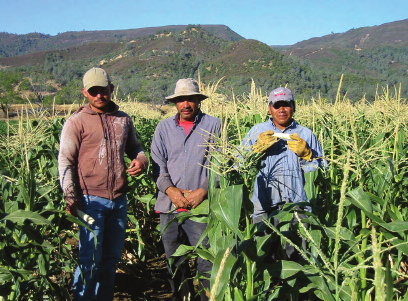
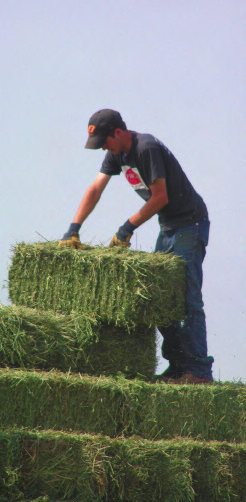
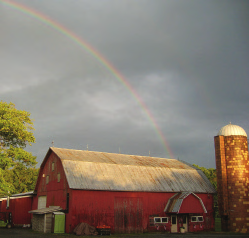
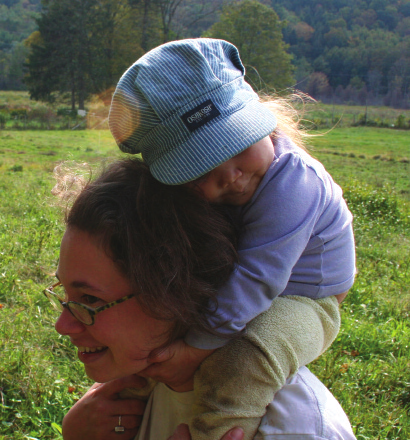
one : farming for the future
From Connecticut to California and everywhere in between, a hearty crop is taking root. And what is this groundbreaking new species? Smart, young people who are returning to the roots of American agriculture—roots steeped in a tradition and culture of diversity, quality, and respect for the earth.
While their contemporaries go off to be lawyers and doctors, teachers and computer programmers, this crop of young people sees a promising future in a new farming paradigm. Using progressive farming practices as well as time-honored traditions, they are sowing the seeds of a new agriculture, where success is measured against a triple bottom line of economic, environmental, and social considerations.
In this chapter, we meet a few of these young trailblazers who are breaking the mold, through innovation, hard work, and a commitment to living in harmony with nature. They see a future where small and mid-sized farms are a larger part of American agriculture, and rural communities draw in new people to farm.
Change is in the air. People across the country are rediscovering a passion for food grown closer to home and with a focus on quality. They want to know where their food comes from. It is this crop of clever young farmers, and those who follow in their footsteps, who are our hope—for a better food system and a healthier planet.
u n c o m m o n w i s d o m : 11
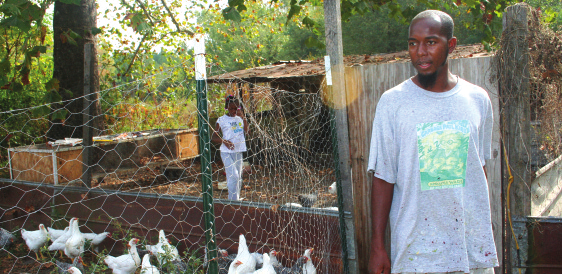
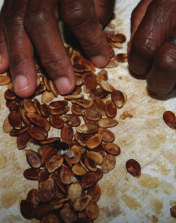
Before Organic
the highest-paying job around. Actually, it was the only job around. Either you got a job at DuPont, or you went north. Farming would no longer support a family.”
After Azeez was laid off, the family lost their house, their car, and practically everything else. He built a handsawn house, in which they lived for thirteen years. They lived by lamplight, with wood fires and a kerosene stove, and became strict vegetarians—often eating raw or dumpster-salvaged food.
“Stress of mind brings expansion of mind,” says Azeez, shrugging.“It was a training camp for organic farming. We grew our own vegetables and medicinal herbs, south carolina : shaheed harris
and we foraged. You know, organic, non-irrigation farming is just a poor man’s way of growing food. That’s how everyone used to do it, up ’til the 1960s.”
According to Shaheed, South Carolina is the perfect place for growing food.
“Our tomatoes don’t grow perfectly round,
Even today, Azeez’s wife, Fathiyyah, claims they don’t need to buy anything other than but they taste ten thousand times better
soy milk, and they use honey from a local seller instead of sugar.“There’s nothing you than supermarket tomatoes. As long as we
can’t grow here,” he explains.“We’re close to the coast and get the spin-off from can get our food in people’s mouths, the
hurricanes. When you see trees growing fifty-feet tall without water, you figure there battle’s not really with the larger farmer.”
must be a way for the sweet potatoes.”
Irrigation, they figure, makes for plants that might grow bigger—but lack the nutrients and flavor the plants get by stretching their roots deeper into the soil to find their own water and minerals.
“Whenever we buy seeds—usually from California—the first crop is always the worst,” Shaheed notes.“We save the seeds that grew successfully, and every time we replant, they adapt and become stronger.You’re actually training your plant to deal with the environment.The seed is built to help itself, you know. And every generation improves.”
The family uses okra seeds that originated from plants Shaheed’s grandfather grew, and seeds collected from watermelons his father nurtured as a child—giving a personal meaning to the concept of “heirloom varieties.”
According to Azeez, only 5 percent of the food in South Carolina is produced in the state. Emile DeFelice, a recent candidate for the position of South Carolina Commissioner of Agriculture, ran using the slogan:“Put your state on your plate!” He lost.
“And people wonder why our state is poor,” Azeez veritably thunders.“If you don’t support the local people, what do you think is gonna happen!”
“It’s like that song. You know it?” asks Shaheed Harris, who is wearing a black Thankfully, local support is growing. When the family—all three generations,
“Trix are for Kids” T-shirt and New Balance sneakers.“We were country before country including Shaheed’s daughter Asya—goes to the farmers’ markets, they sell out was cool.”
every time.
His soft voice peals with laughter. He’s right. Shaheed’s family turned back to
“Our tomatoes don’t grow perfectly round, but they taste ten thousand times work the land at a time when doing so was nearly unheard of, and hardly better than supermarket tomatoes,” says Shaheed proudly.“As long as we can get our recommended. Later, they became the one of the first farms in South Carolina to food in people’s mouths, the battle’s not really with the larger farmer. But we spend a lot become certified organic. The decision to farm was made out of necessity more than of time educating the consumer.”
any conscious choice. Shaheed’s father, Azeez Mustafa, had worked on an assembly line Becoming organically certified was a relatively simple matter. According to at DuPont and was laid off right before Shaheed was born.
family records, the land had been free of chemicals for decades longer than the
“My job title was ’Group II,’” Azeez recalls.“Back in the seventies, DuPont was requisite three years. South Carolina State University established an outreach program 12 : o u t s t a n d i n g yo u t h
u n c o m m o n w i s d o m : 13
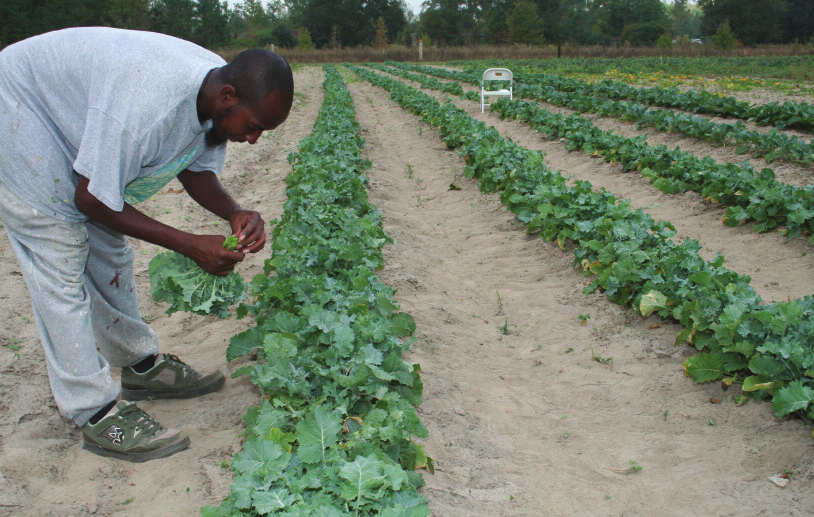
for minority farmers, and Clemson University helped certify the farm in 2003. A Fathiyyah adds,“The elders still knew certain things. And the more natural you nonprofit called Carolina Farm Stewardship Association, which has been fostering become, the more remembrances come back to you. I read Rodale, and gave it all some sustainable agriculture since 1979, recognized the Mustafa family from the start and thought, and tested a lot of ideas. Sure, pests are a problem, but spraying gets rid of too named them Farmers of the Year in 2006 to reward their hard work.
“Be a good shepherd. . . . Start tearing up
many things. We put down grits to fight the ants; we spray with cayenne pepper, or dish Today, Azeez and Fathiyyah travel and teach classes about non-irrigation these beautiful yards and plant some
detergent, or vegetable oil. The deer loved our peas and beets, but I learned that if you farming and how to work with the weather, and other natural cycles.
beautiful vegetables instead!”
put human hair in your garden, they stay away.” The local barbershop is happy to save After becoming certified organic, the Mustafas teamed up with eight like-up hair for Fathiyyah’s natural pest management.
minded farmers in the area to set up Sumter Cooperative Farms. To date, it is the largest Minimalism and self-sufficiency are unquestioned pillars. The Mustafas have a organic farm cooperative in the state. The co-op continues to expand, having identified small tractor for running rows, but family members still do most of the work by hand another eight farms that are on their way to being certified. They stagger the products with a stirrup hoe.
of each grower to help them meet the demands of the market: watermelon, mizuna, and The Mustafas farm in a way that is far more sustainable, attentive, and holistic arugula are particularly sought after. Treated like living plants, the freshly picked greens than the industrial greenhouses in California that share the “certified organic” sticker. As stand in a pan of water, like cut flowers,
organic standards loosen up increasingly,
until their customers pick them up.
how are consumers to know the
The Mustafas specialize in salads,
difference, when the labels look the same?
greens, and medicinal herbs.
“Shop at farmers’ markets,”
“We couldn’t afford to go to the
Shaheed stresses.“Buy local.”
doctor when Shaheed was growing up,”
This family didn’t choose organic
says Azeez.“So we learned as much as
farming for its economic or social
possible about taking care of ourselves.
advantages, per se. In fact, they react with
We spent thirteen years without a
what seems to be pleasant, unconcerned
television, remember? So we had time.
surprise at seeing their unusual lifestyle
Now we can afford it—but Aysa is eight
being adopted because, suddenly, it’s hip.
and has never had to go to the doctor. You
Whole Foods takes legions of employees
work with creation instead of against it.”
on tours of the Mustafa farm, where
What kinds of herbs keep a whole
scarecrows stand erect in the fields, glaring
family healthy for thirty years?
at animals with the effrontery to approach.
“Alfalfa is the mother of all
You get the feeling that, were all
herbs—a blood cleaner,” Azeez begins,
excitement to disappear tomorrow, the
counting off on his fingers:“I suggest that
family would just shrug and carry on. But
you use dandelion root and milk thistle to
though they seem oblivious to outside
clean the liver. Cinnamon cleans the
forces that would shake up their world,
pancreas. Ginger and cayenne pepper are
there’s nonetheless something of the
catalysts to clear out phlegm. Raw
prophet about both preacher-voiced
cranberries and thyme tea will help with
Azeez and gentle Shaheed.
kidney stones. What else? Yellow dock,
“Be a good shepherd,” says
burdock, echinacea, chaparral, red clover
Shaheed.“Start tearing up these beautiful
blossom. We use them all. Just use good
yards and plant some beautiful vegetables
food and herbs, and there, you’ve tuned
instead! Call us if you lose the way!”
the body up!”
14 : o u t s t a n d i n g yo u t h
u n c o m m o n w i s d o m : 15
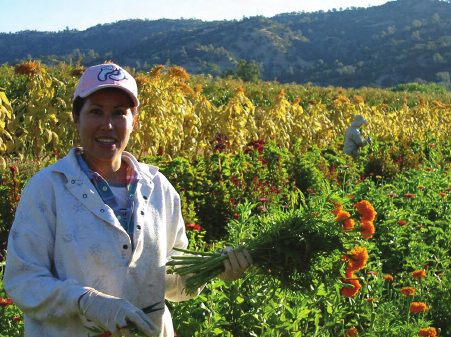
A Piece of Rural Perfection
she is an “excellent communicator and facilitator,” says Judith Redmond, one of the four Full Belly Farm founders. Judith describes Joaquina as focused on self-improvement—proven by her enrollment in classes to improve English skills and attain citizenship.
When she arrived at Full Belly Farm, Joaquina’s primary role was picking vegetables.
Today, Joaquina wears many hats, but primarily works in quality control in the farm’s shop, a role she relishes. During her thirteen years with Full Belly Farm, Joaquina’s abilities have evolved symbiotically with the farm’s needs, capitalizing and building on her already positive and helpful nature.
california : joaquina jacobo
“Los patrones son buenos amigos,” says Joaquina as she describes her close relationship with Fully Belly Farm’s owners and the family feel among the farm staff.
While the work is hard, Joaquina believes she has a good job. Weekly yoga on the farm Full Belly Farm forms a sunny patchwork of animals, plants, insects, and laborers helps balance the stress involved with her work. The entire farm staff, Joaquina’s sixteen-working in collaboration to produce a bounty of crops for Sacramento and Bay Area year-old son included, comes together to stretch tired muscles every Friday morning.
residents. The 200-acre certified organic farm was founded in 1985 in Guinda, California, a When asked if he enjoys the yoga, Edgar says,“Yeah, it’s pretty cool,” a ringing small town about sixty miles northwest of Sacramento. The farm combines diverse endorsement from a teenager.
agriculture with educational outreach and a firm commitment to environmental In contrast to Joaquina’s long-term employment with Full Belly Farm, many of stewardship. On a typical day, Full Belly Farm hums busily as the farm’s fifty or so workers California’s 600,000 farm workers are employed by labor contractors, and work on a tend to chicken, sheep, and cows; harvest vegetables, herbs, flowers, and nuts; and prepare temporary basis. Most are men, age twenty-five to thirty-five, who work seasonal jobs boxes for CSA (Community Supported Agriculture) subscriptions beneath a hot Central ranging from three to ten weeks. According to a National Agricultural Worker’s Survey from Valley sun.
2003-2004, 43 percent of all individual farm workers and 30 percent of farm worker families Joaquina Jacobo is a vital fixture on Full Belly Farm. It can be difficult to locate her earned less than ten thousand dollars per year.
with the many roles she plays, such as picking vegetables, preparing flowers for farmers The serenity of Joaquina’s open face reflects neither the stress of hard labor nor markets, packing Full Belly’s CSA boxes and working the farm’s market stand.
that of parenting three children.“La vida rural es más tranquilo,” she explains after
“She’s in the kitchen,” says one worker, while another suggests she’s at the washing considering why she chooses a rural life. Joaquina likes that she can leave keys in her car. She machine. Just then, Joaquina strides from behind the shop with a wide, friendly smile and a appreciates pure air and sees more opportunities for independence in open spaces. While greeting of,“Un momentito,” as she rushes to drop off a wheelbarrow before moving to the she enjoys the independence of rural life, Joaquina also remains closely connected to her cool shade to talk about her journey to Full Belly Farm.
fellow farm workers. She makes sure that new immigrant laborers on Full Belly Farm In 1994, as a young woman, Joaquina left her parents and siblings behind in understand the differences in United States’ labor practices, such as using disinfectant Sinaloa, Mexico, to come to the United States with her then three-year-old son, Edgar. Her liquids or working hourly instead of on contract. Joaquina’s communication skills, concern husband, Bonaficio, and a job picking vegetables were waiting for her at Full Belly Farm. As a for others, and deep knowledge of Fully Belly’s operations make her role a natural fit.
young girl, Joaquina had learned the essentials of farm work and life in the countryside Leaving the shady sanctuary of the garden, Joaquina walks through the farm’s shop while growing up on her family’s small vegetable farm and cattle ranch in the mountains of where her nearly grown son is busy sorting vegetables. She points from buckets overflowing Sinaloa. School was a three to four hour walk from her family home. With no car available, with bright flower blossoms to the farm’s fruit trees. Drying fruit lines the path while bees Joaquina was only able to attend through fourth grade. Despite her short career as a buzz through the grass, hard at work doing their part for the farm’s production.
student, Joaquina sees the power of education and believes that education is the most The serenity of Joaquina’s open face reflects
At the end of the orchard row are flower fields where kneeling workers are busy important thing for youth to succeed.
neither the stress of hard labor no
















